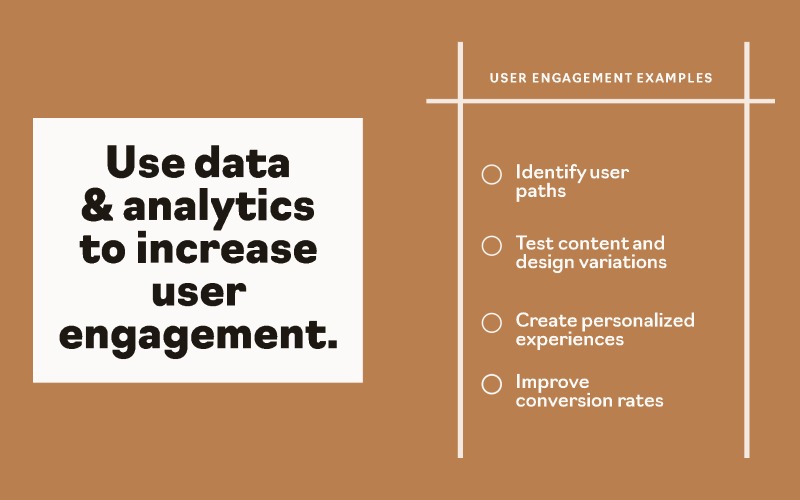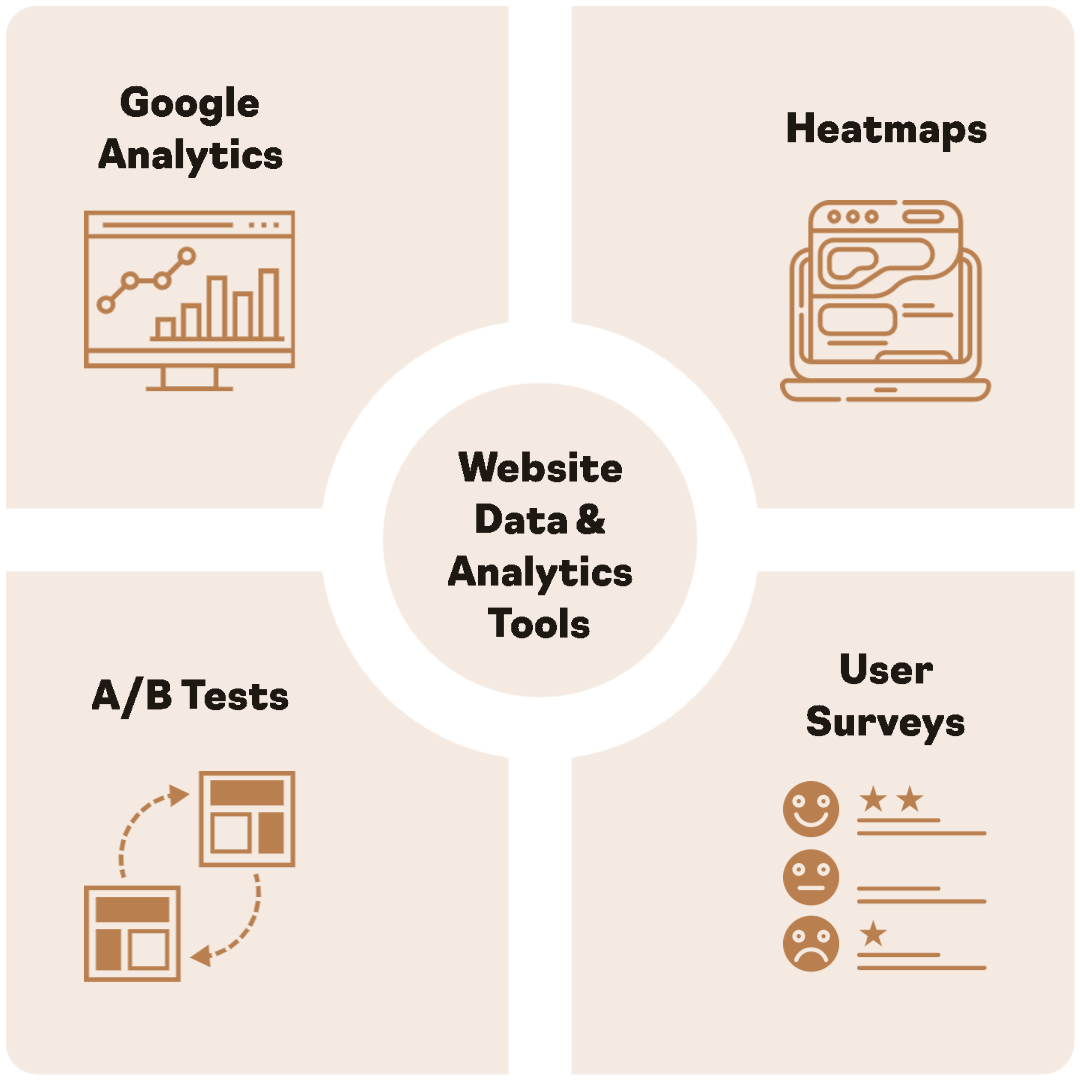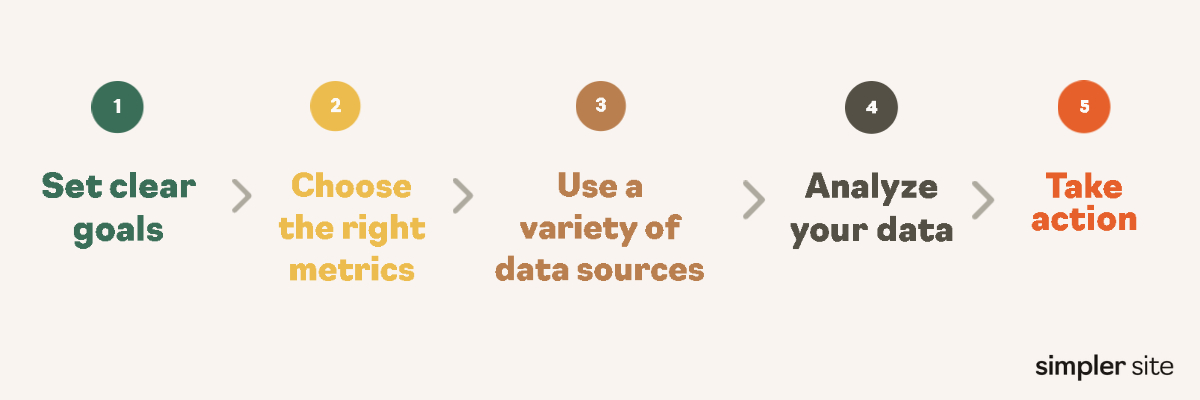A study by McKinsey & Company found that companies that effectively use analytics in service of marketing and sales performance are 1.5 times more likely to achieve above-average growth rates than their peers.
Data and analytics can be used to inform all sorts of decisions, from marketing campaigns to product development. And when it comes to B2B web development, data can be a powerful tool for improving the user experience and driving conversions.
Given the importance of data in B2B web design, it is essential to know how to gather and use data effectively. This article will discuss some of the most important data points to collect, as well as how to analyze and use that data to improve your website.
Use Data to Understand Your Target Audience
Data can help you understand your target audience’s demographics, interests, and needs. This information can be used to create more relevant and engaging content, improve your website’s user experience, and ultimately drive more conversions.
Here are some specific examples of how you can use data to understand your target audience:
Understand your users’ needs and wants: You can use data to understand your target audience’s needs and wants. This information can be used to create content that is more relevant and helpful to your target audience. For example, you can use data to create personalized experiences for your users. This could involve recommending products or services, sending targeted emails, or providing special offers.

Understand how users behave on your website: You can use data to track your target audience’s behavior on your website. For example, analytics can help you identify which pages are most popular, which pages are causing users to bounce, and which pages are taking users the longest to complete. This information can be used to identify areas of your website that are working well and areas that could be improved.
Gain insights into users’ demographics: You can use data to identify your target audience’s age, gender, location, interests, and other demographics. This information can be used to create content that is more likely to appeal to your target audience. For example, if you know that your target audience is mostly male, between the ages of 25 and 35, and lives in urban areas, you can use this information to choose colors, fonts, and images that are likely to appeal to this demographic.
By understanding your target audience, you can create a more effective website that will attract more visitors, keep them engaged, and ultimately drive more conversions.
Use Data to Increase User Engagement and Improve Conversion rates
User engagement on a website is a measure of how users interact with the website. It can be measured in a number of ways, such as the number of pages visited, the amount of time spent on the website, and the number of actions taken, such as clicking on links or filling out forms.
User engagement is important because it can help you to understand how users are using your website and what they are finding valuable. This information can then be used to improve the website’s design, content, and functionality.

Here are a few specific examples of how data and analytics can be used to increase user engagement on a B2B website:
Identify the most common user paths. Data can help identify common user paths by tracking user behavior on a website or app. By understanding how users are interacting with your website or app, you can identify common user paths and make changes to improve the user experience. For example, if you see that a lot of users are clicking on a particular link but then leaving your website, you may want to consider changing the content of that link or making it more prominent. Or, if you see that a lot of users are getting stuck on a particular step in a checkout process, you may want to simplify that step or provide more instructions.
Test different variations of content and design changes: By testing different variations of content, you can see what resonates best with your audience. This information can then be used to create more effective content that drives engagement and conversions. You could also test different layouts, different colors, or different call-to-action buttons to see what performs best.
Create personalized experiences for users: This can be done by segmenting users based on their interests or demographics and then delivering content that is relevant to each segment. For example, a company that sells software to businesses could segment users based on their industry and then deliver content that is relevant to that industry. This type of personalization can help to increase user engagement and loyalty.
Improve conversion rates: By collecting and analyzing data about website visitors, you can gain insights into what content is most engaging, what pages are most visited, and where users are dropping off. By tracking conversion rates, you can see how many visitors are taking your desired actions, such as signing up for your email list, downloading a white paper, or making a purchase. This information can help you identify areas where you can improve your website’s conversion rates.
Tools for Gathering Website Data
Now that you know how to use data to improve your B2B website design, here are some tools that can help you gather the data you need.

B2B companies can use a variety of tools to gather data to inform their web design decisions in a number of ways, including:
Google Analytics: Google Analytics is a free web analytics service that provides businesses with a wealth of data about their website traffic. By using Google Analytics, B2B companies can track website traffic, measure marketing performance, and improve customer insights.
Heatmaps: Heatmaps are a type of visualization that shows where users are clicking, scrolling, and hovering on a website. They can be used by B2B companies to understand how users interact with their website and identify areas that need improvement. There are a number of heatmap tools available, each with its own strengths and weaknesses. Some of the most popular heatmap tools include Hotjar, Crazy Egg, Mouseflow, and Inspectlet. The best heatmap tool for you will depend on your specific needs and budget.
A/B testing: A/B testing, also known as split testing, is a method of comparing two versions of a web page or landing page to see which one performs better. It can be used to test different headlines, call-to-action buttons, images, and other elements of a web page. Some of the most popular A/B testing tools include Google Optimize, Optimizely, VWO, Crazy Egg, and Inspectlet.
User surveys: B2B companies can use user surveys to improve their web design by gathering feedback from their customers on how easy it is to use their website, what features they would like to see added, and what areas of the website are confusing or frustrating.
Tips to Strategically Gather & Use Data

Now that you know some of the tools available for gathering website data, here are a few final tips for using data strategically to improve your website.
Set clear goals. What do you want to achieve with your website? Do you want to increase traffic, generate leads, or drive sales? Once you know your goals, you can start to collect data that will help you track your progress and make necessary adjustments.
Choose the right metrics. Not all data is created equal. Some metrics are more important than others, depending on your goals. For example, if you want to increase traffic, you’ll want to track metrics like pageviews and bounce rate. If you want to generate leads, you’ll want to track metrics like form submissions and conversion rates.
Use a variety of data sources. Don’t just rely on website traffic data or conversion data. Use a variety of data sources, such as user feedback, competitor data, and industry trends, to get a comprehensive view of how your website is performing.
Analyze your data. Once you’ve collected data, you need to analyze it to find trends and patterns. This will help you identify areas where your website is performing well and areas where it could be improved.
Take action. Once you’ve analyzed your data, you need to take action to improve your website. This could involve making changes to your content, design, or functionality.
Simpler’s Approach to B2B Data & Analytics
Data and analytics are powerful tools that can help B2B companies to create more user-friendly and effective websites. By understanding how users interact with their website, B2B companies can improve their B2B Inbound Marketing efforts and create a website that is more likely to convert visitors into customers.
Here at Simpler Site, we incorporate data into design and decision-making through all of our services. This helps us make better decisions that ultimately help our clients achieve their business goals. When you utilize Simpler’s Ongoing Website Management services, customized analytics reporting and insights is included standard with all packages.
Are you considering ways your B2B company can better utilize data in your marketing decision-making? Contact us for a complimentary consultation – we look forward to talking with you!